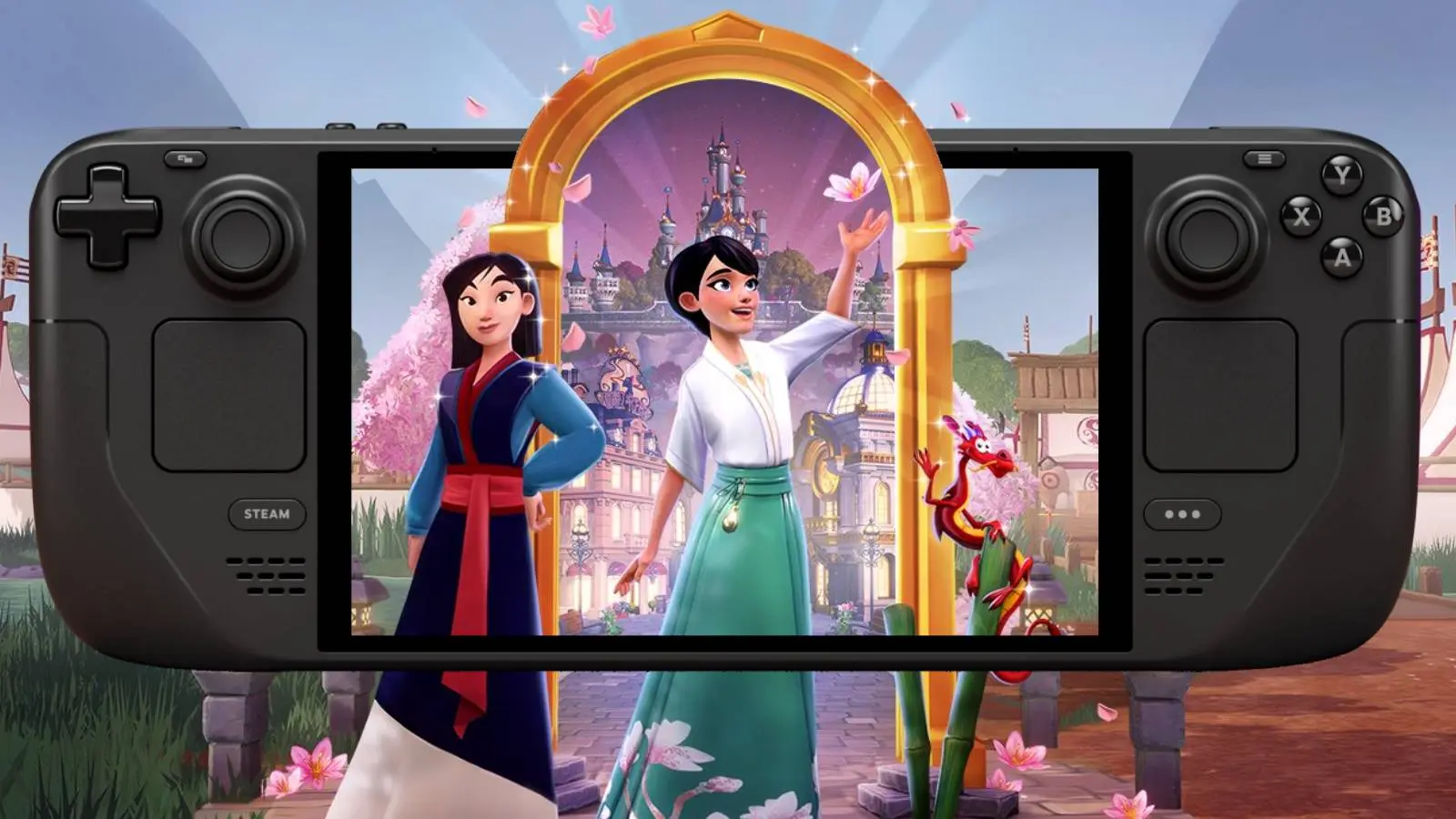You won’t need to wish on a star to play Disney Dreamlight on the go. Gameloft’s life-sim adventure hybrid runs great on the Steam Deck, and even greater with our best settings recommendations.
Whether you’re a huge Disney fan or enjoy the chill gameplay of a life-sim, Disney Dreamlight Valley is ideal for gaming handhelds. Hanging out with, and completing quests for your favorite Disney characters lends itself to being played on the go. Especially as it gives you plenty of opportunity to attend to your crops, and check in with your daily tasks.
Disney Dreamlight Valley and the Steam Deck are a magic combination. With the Gameloft life-sim hybrid natively available on Steam, you couldn’t wish for a better experience than on Steam Deck. To make the valley truly shine, we’ve gathered the best settings so you can have the ultimate Disney Dreamlight Valley experience on the go.
Can you play Disney Dreamlight Valley on Steam Deck?
Disney Dreamlight Valley is playable on the Steam Deck. However, it needs some tinkering with the game settings to make Mickey Mouse and friends look their best.
It took a while for Disney Dreamlight Valley to earn its fully verified commendation from Valve. However, even before it had been through the middling testing process, Disney Dreamlight Valley ran like a dream on the Steam Deck.
Out of the box, the game looks great, especially on the Steam Deck OLED model’s crisp display. Disney Dreamlight Valley will launch at a 1280 x 800 resolution by default, with the graphical preset graphics and distance quality set to high. Meanwhile, the shadow resolution will be set to low, and VSync will be on. With the default settings, the game hovers around 60 FPS. If you have a particularly packed valley, you may see some occasional drips from anything from 50 to 40 FPS. This can also occur if you’re surrounded by a lot of Disney characters at one time.
Disney Disney Dreamlight Valley best settings on Steam Deck
- Graphics Preset: PC High
- Shadow Resolution: PC Low
- Distance Quality: PC Medium
- Texture Quality: Default
- VSync: Off
- Proton version: Proton 9.0-2
From our own testing, we experienced some awkward anti-aliasing effects that made our favorite Disney characters not look their best. While the default in-game settings for Disney Dreamlight Valley run fine on the Steam Deck for the most part, tweaking them slightly will truly unleash the magic of the game on your handheld.
Subscribe to our newsletter for the latest updates on Esports, Gaming and more.
For running the game on Steam Deck, we recommend setting the graphics presets setting to high, while ensuring the shadow resolution is set to low, and the distance quality set to medium. While still within the in-game settings, setting the texture quality to default and ensuring VSync is turned off will help prevent better against any noticeable FPS drops.
Within the Steam Deck settings, setting the frame rate limiter to 60 FPS can also help make Dreamlight Valley a smoother experience.
We also recommend keeping your Steam Deck charger at arm’s length. On a full charge, you’ll only get around 2 hours of playtime with Disney Dreamlight Valley gameplay on the Steam Deck. The 50Whr battery of the upgraded OLED model should give around 4 hours of playtime. However, Dreamlight Valley is a battery hog as even with its cartoon style, it’s still a fairly graphically demanding game.
During our testing, it was regularly using 99% of the handheld’s battery consumption, and the fans were working over time. This never resulted in overheating or crashes, but having your battery handy will ensure you can keep questing for hours on end.
Disney Dreamlight Valley requires approximately 11.97GB of install space for your Steam Deck, which isn’t a lot by today’s standards. However, with it regularly getting updates and expansions, it’s likely its storage requirements will get more demanding over time.
Picking up one of the best microSD cards will help ensure you have plenty of storage for Disney Dreamlight Valley and any Steam Deck game you want to play – especially if you haven’t yet picked up the 1TB OLED or upgraded the SSD.
